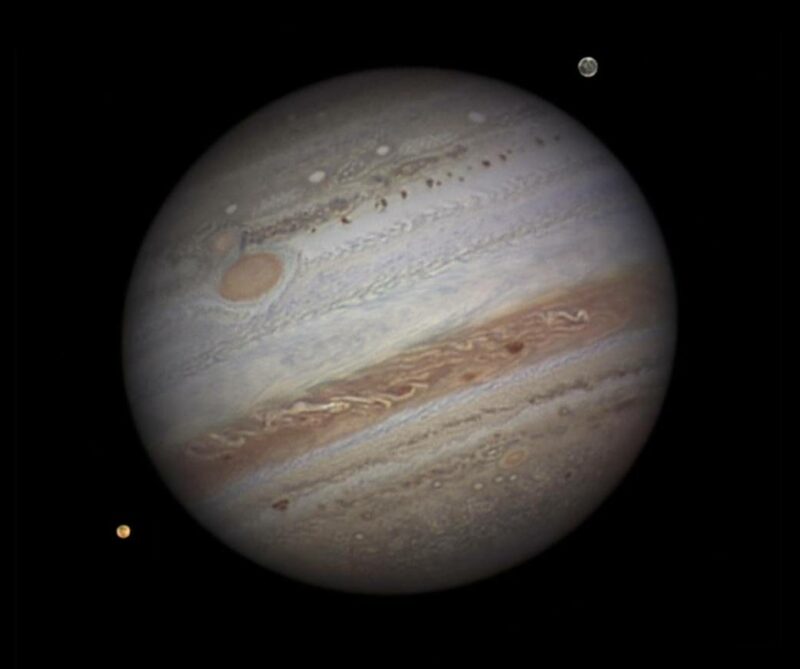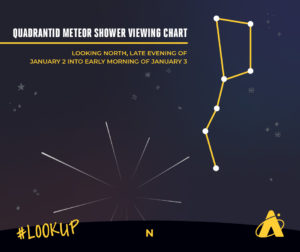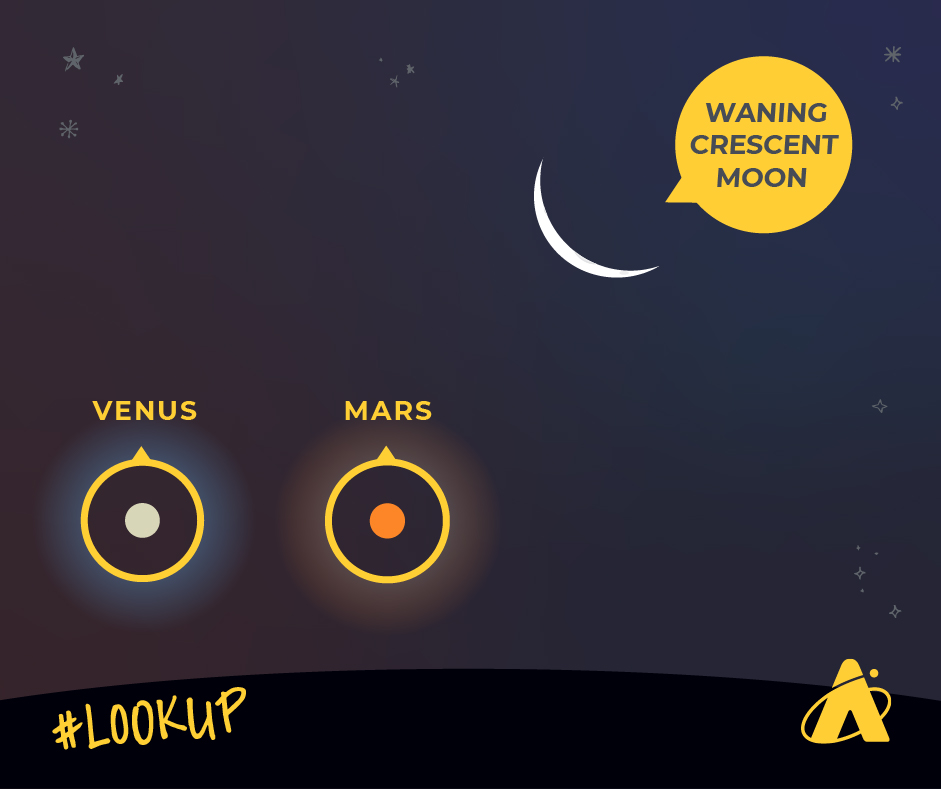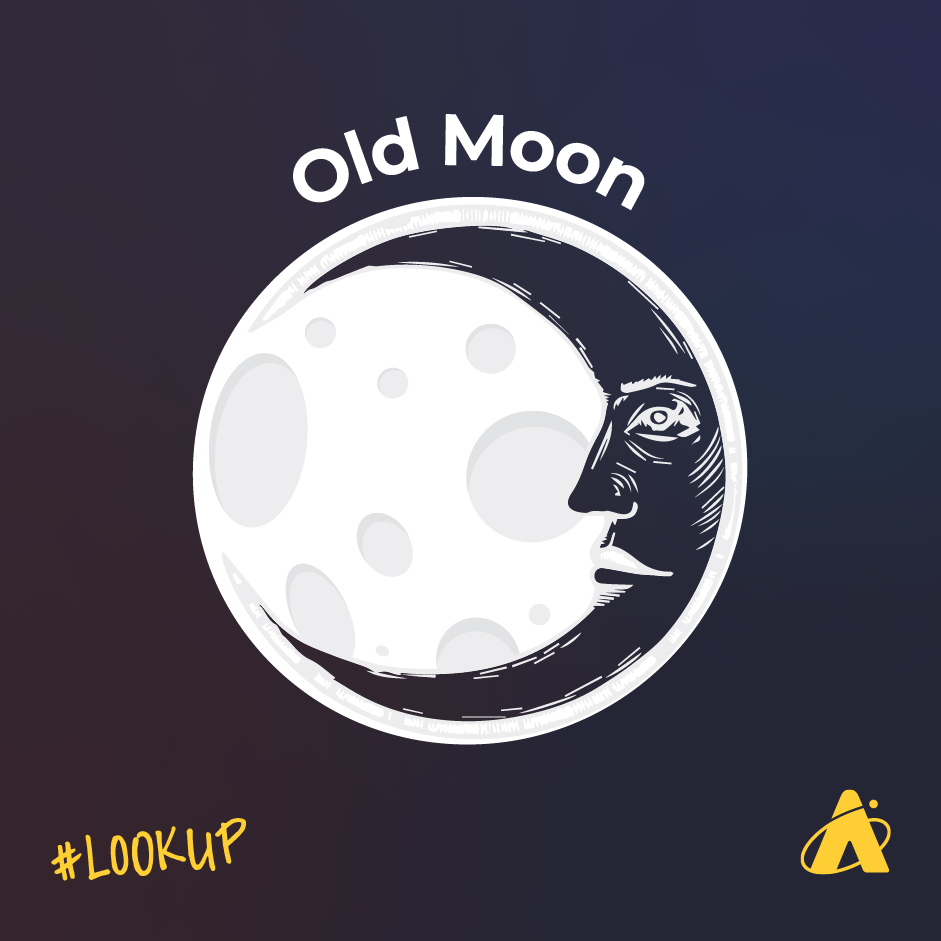Adler Skywatch: January 2022

Header Image: Jupiter and two of its Moons, Io and Ganymede
The Earth’s closest point to the Sun for the year and a major meteor shower are highlights for this month, January 2022.
Perihelion, or the point in Earth’s orbit when it’s closest to the Sun, occurs at 12:52 am CST the morning of January 4. This year at perihelion, Earth is about 91.4-million miles away from the Sun. That’s more than 3-million miles closer than it will be at aphelion, which this year occurs the morning of July 4.

The Quadrantids meteor shower, historically one of the year’s most prolific showers, occurs January 1 through January 5. The shower peaks the night of January 2 and the early-morning darkness of January 3. The waxing crescent Moon sets early in the evening of January 3, so skies will be good and dark for viewing. Under very clear, very dark skies, some 25 to 40 meteors per hour may be visible at the shower’s peak.
During the past few months, the planets Jupiter, Saturn, and especially the brightest planet, Venus, have dominated the early-evening skies. This month, however, the planets move lower in the southwest sky each evening, and the Sun sets a little later. As a result, Venus is virtually impossible to see in the evening. Instead, you’ll need to wait until later in the month–and you’ll need to look for it in the morning sky. Starting January 22, look for bright Venus very low in the east-southeast about 40 minutes before sunrise. It gets slightly higher in the sky with each passing morning, as it moves away from the rising Sun.

While you’re up looking for Venus, look about 10 to 15 degrees to its right to spot the much dimmer, ruddy-colored planet Mars. The morning of January 29, Mars appears near a very slim waning crescent Moon. Both Mars and Venus fade away as dawn breaks.
This month, bright Jupiter is visible at dusk low in the southwest sky. It sets in the west-southwest about 8:00 p.m. CST at the start of the month, and about 7:00 p.m. CST by month’s end.
The planet Saturn appears about 20 degrees to the lower right of Jupiter. Being closer to the horizon than Jupiter, the first half of the month, Saturn sets in the west-southwest before evening twilight is over. After mid-month, it will be nearly impossible to see Saturn in the bright evening twilight.
The first half of this month is a good time to look for the elusive planet, Mercury. The closest planet to the Sun, Mercury is often hidden in solar glare–and when it is visible, it’s always close to the horizon. Start looking for the planet shortly after sunset, close to the southwest horizon. You can use the planets Jupiter and Saturn as pointers. Draw an imaginary line from Jupiter to Saturn. Continue the line past Saturn, and you’ll reach Mercury.
Each evening through January 14, the planet Saturn appears to move further away from Jupiter and closer to Mercury. After January 15, it becomes difficult (if not impossible) to see either Satur
n or Mercury, since the Sun is setting slightly later and the planets are moving lower in the sky each day.

New Moon: January 2
First Quarter Moon: January 9
Full Moon: January 17
Last Quarter Moon: January 25
New Moon: January 31
Please note: these descriptions are for the Chicago area, using Central time.
Subscribe To Skywatch Wednesday This January
Tour the night sky weekly with the Adler Planetarium’s Theaters Manager Nick, who uses cutting edge visualizations, NASA images, and astrophotography to show you what you can see in the night sky throughout the year.
Learn From Our Astronomy Educators
Watch exclusive live episodes of Sky Observers Hangout this January! Our astronomy educators will show you how you can see the northern lights on January 3. New episodes air every month.






